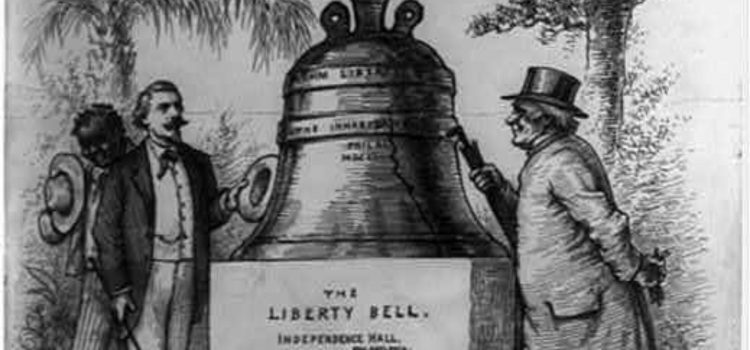

This article is an excerpt from the Shortform guide to "Stuff You Should Know". Shortform has the world's best summaries and analyses of books, podcasts, and more.
Like this article? Sign up for a free trial here.
Where does the history of the Liberty Bell begin? Where is it now?
The history of the Liberty Bell starts in 1751, when it was forged on the eve of the Revolutionary War. Since, it has become relevant in many periods of American history, such as during the abolitionist movement and later World War I.
Read on to understand the depth of the significance of the Liberty Bell in history, as recounted on the Stuff You Should Know podcast.
About the Liberty Bell
On an episode of the Stuff You Should Know podcast, the hosts discuss the history of the Liberty Bell. The Liberty Bell, situated in Philadelphia, Pennsylvania, is a crucial aspect of American history. Installed in the Pennsylvania State House, now known as Independence Hall, in 1752, the bell has come to symbolize American independence and freedom. Its inscription of the biblical verse “Proclaim Liberty throughout all the land unto all the inhabitants thereof” from Leviticus 25:10 reinforces this connection with these ideals. The Liberty Bell is famous for its unique crack that developed sometime after it was hung, adding a sense of mystery and fascination to its tale.
Originally cast for practical purposes such as summoning lawmakers and alerting citizens to public meetings, the bell gained fame for its distinctive sound and association with pivotal events in American history.
The Revolutionary Era of the Liberty Bell
After its creation, the Liberty Bell’s story continues into the turbulent era of the American Revolutionary War. To safeguard it from being melted down by approaching British soldiers, the bell was covertly concealed in 1777, a covert operation full of intrigue and concealment. Following the war, the bell reappeared unharmed, poised to continue its role as a symbol of the young nation.
The Liberty Bell During the Abolitionist Era
The term “Liberty Bell” was coined in the 1820s, inspired by abolitionist campaigns against slavery. It was formally named more than ten years after Marquis de Lafayette’s visit, as its representation of freedom and independence gained wider acceptance. The bell evolved from a practical object to a symbolic icon, embodying the ideals of liberty and democracy.
Liberty Bonds and World War I
During WWI, the Liberty Bell was showcased on a train that traveled across the country as part of the Liberty Bond campaign, boosting financial backing. This creative display helped generate substantial public support and fundraising success, bringing in an amount comparable to billions in current currency. Approximately one-fourth of the U.S. population had the opportunity to see the bell in person during its tour.

———End of Preview———
Like what you just read? Read the rest of the world's best guides to Stuff You Should Know" at Shortform.
Here's what you'll find in our full Stuff You Should Know episode summaries:
- Insights from an entertaining general knowledge show
- Topics ranging from discussions on Barbie to events in history
- Introduction using anecdotes that invite you to be as curious as the hosts of the podcast






